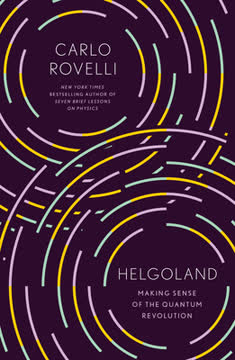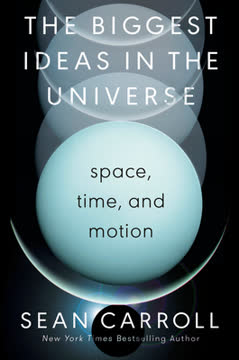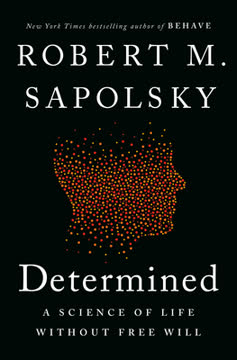Key Takeaways
1. The World Embodies Beautiful Ideas
This book is a long meditation on a single question: Does the world embody beautiful ideas?
A central question. The book explores whether the physical universe, when examined deeply, reflects concepts we perceive as beautiful. This isn't just about aesthetics but about the underlying structure and principles governing reality. It's akin to asking if the world is a successful work of art.
Beyond conventional. While many traditions attribute creation to goodness or glory, the idea of an artistic Creator motivated by beauty is less common. However, this perspective has inspired thinkers across centuries, suggesting that appreciating the world's beauty can be a path to understanding its Creator, or at least its deepest nature.
Science and art. To answer this question fully requires insights from both science, which investigates the physical world, and art, which embodies visionary conceptions in physical forms. The journey involves exploring how great minds, from ancient philosophers to modern physicists, have grappled with this possibility.
2. Ancient Harmony in Number
All Things Are Number
Pythagoras's credo. The legendary Pythagoras and his followers were profoundly impressed by the discovery that abstract numbers govern concrete physical relationships. His theorem linked numbers to geometric shapes, showing a hidden unity between mind (number) and matter (size/shape).
Musical revelation. Even more astonishing were the discoveries linking numbers to musical harmony.
- String length ratios (1:2, 2:3, 3:4) produced harmonious tones (octave, fifth, fourth).
- String tension ratios (1:4, etc.) also produced harmony, but required squaring the numbers.
Number as thread. These findings suggested that number was the linking thread in a trinity of Mind-Matter-Beauty. While the literal belief that all things are numbers proved too simple (e.g., irrational numbers from the Pythagorean theorem itself), the conviction that the world embodies beautiful concepts rooted in number and geometry was born.
3. Ideal Forms Shape Reality
The world, in its deepest structure, embodies Beauty.
Plato's vision. Plato proposed that the physical world is an imperfect copy of a perfect, eternal realm of Ideas or Forms. He sought to find these ideal forms embodied in reality, particularly through geometry and symmetry.
Structure from symmetry. Inspired by the five perfect Platonic solids, Plato audacious proposed them as the shapes of the fundamental elements (earth, air, fire, water) and the universe itself. Although scientifically wrong, this idea that structure arises from mathematical perfection was profoundly influential.
Escaping the Cave. Plato's allegory of the Cave illustrates his view that our everyday perception is merely a shadow of true reality. He believed that through intellectual pursuits like philosophy and mathematics, we could escape this limited view and apprehend the clearer, more beautiful essence of reality.
4. Dynamical Laws Reveal Beauty
By this way of Analysis we may proceed from Compounds to Ingredients, and from Motions to the Forces producing them; and in general, from Effects to their Causes, and from particular Causes to more general ones, till the Argument end in the most general.
Newton's method. Isaac Newton revolutionized science by demanding precision and applying the method of Analysis and Synthesis. He broke down complex phenomena into simpler parts governed by precise laws, then synthesized understanding of the whole.
- Light: Analyzed into pure spectral colors.
- Motion: Analyzed into velocity and acceleration.
- Mechanics: Analyzed into forces.
Laws of change. Newton's laws of motion and gravity were dynamical laws, describing how things change over time. This introduced a new concept of beauty – not static perfection, but the beauty of the laws governing possibilities and transformations. His "Mountain" thought experiment beautifully illustrated universal gravity.
Beyond appearances. Dynamical beauty transcends the appearance of specific objects. The complex, non-circular orbits of planets are not simple in themselves, but their behavior emerges from the deep, simple design of Newton's universal laws, revealing beauty in the underlying principles.
5. Fields Unify Forces and Light
The velocity of transverse undulations in our hypothetical medium . . . agrees so exactly with the velocity of light . . . that we can scarcely avoid the inference that light consists in the transverse undulations of the same medium which is the cause of electric and magnetic phenomena.
Beyond the Void. James Clerk Maxwell, building on Michael Faraday's intuitions, replaced the idea of forces acting instantaneously across empty space with the concept of space-filling fields or fluids. These fluids transmit forces and have their own dynamics.
Electromagnetic dance. Maxwell codified the laws of electricity and magnetism into a system of equations. He discovered an inconsistency and resolved it by adding a new term, making the equations more symmetric and consistent. This led to a stunning prediction:
- Changing magnetic fields produce electric fields (Faraday's Law).
- Changing electric fields produce magnetic fields (Maxwell's term).
- This interplay creates self-sustaining electromagnetic waves.
Light revealed. Maxwell calculated the speed of these waves and found it matched the measured speed of light. This led to the profound inference that light is an electromagnetic wave, unifying electricity, magnetism, and optics. His equations, beautiful in their form and consequences, became foundational.
6. Symmetry Dictates Nature's Laws
Change Without Change is the essence of symmetry.
A powerful principle. Symmetry, precisely defined as transformations that leave something unchanged, has become a dominant principle in fundamental physics. This applies not just to objects but, crucially, to the laws and equations that describe nature.
From rigid to local. Early physics considered rigid symmetries (e.g., laws are the same everywhere in space). Einstein's general relativity introduced local symmetry (laws are the same even if transformations vary locally), requiring the existence of the metric fluid (gravity). Yang and Mills extended this to property spaces, leading to theories of other forces.
Avatars of symmetry. The fundamental force-carrying particles – photons (electromagnetism), color gluons (strong force), weakons (weak force), and gravitons (gravity) – are understood as the necessary embodiments, or "avatars," of these local symmetries. Their existence and properties are dictated by the symmetry requirements.
7. Quantum Theory Reveals Atomic Music
Atoms are musical instruments, and the light they emit makes their tones visible.
Music of the spheres, real. Quantum theory, describing the atomic world, reveals a profound connection to the mathematics of music. The equations governing electrons in atoms are analogous to those describing vibrations in musical instruments.
Stationary states. Electrons in atoms exist only in discrete "stationary states," like the natural vibration modes of a string or drum. These states have specific, quantized energies. Transitions between these states involve emitting or absorbing light.
Visible harmony. The colors of light emitted or absorbed by atoms form distinct spectra. According to the Planck-Einstein relation, the color (frequency) of light is proportional to its energy. Thus, atomic spectra are a visible record of the energy differences between stationary states, a true, mathematical "Music of the Spheres."
8. The Core Theory's Hidden Beauty
The Core provides a secure foundation, in physical law, for all applications of physics to chemistry, biology, materials science, engineering in general, astrophysics, and major aspects of cosmology.
Building blocks. The Core Theory, our modern Standard Model, describes the fundamental particles (quarks, leptons, photons, gluons, weakons, Higgs, gravitons) and their interactions. It provides a complete, tested framework for understanding normal matter and forces.
Structure from rules. The Core explains how complex matter emerges from simple rules. For example, the Pauli exclusion principle and electron-nucleus attraction govern atomic structure and chemistry. The strong force (QCD) binds quarks into protons/neutrons and nuclei, explaining most of ordinary matter's mass through pure energy (E=mc²).
Deep elegance. Despite its complexity, the Core Theory is rooted in elegant ideas:
- Particles are quanta of quantum fluids.
- Forces arise from local symmetries of space and property spaces.
- Matter properties relate to position in property spaces ("what from where").
9. Unification Hints at Deeper Truth
Having tasted beauty at the heart of the world, we hunger for more.
Beyond the Core. While the Core Theory is powerful and beautiful, it has imperfections: multiple seemingly unrelated forces and particles, unexplained parameters (like particle masses and family mixing), and the mysteries of dark matter and dark energy.
Symmetry as guide. Inspired by the success of symmetry, physicists seek a larger, unifying symmetry that could encompass all the Core's forces and particles. Mathematical exploration reveals candidate symmetries and property spaces that could potentially unify the known particles into a single entity.
A near miss. Calculations based on known physics show the strengths of the strong, weak, and electromagnetic forces almost unify at very high energies (short distances). Adding hypothetical particles predicted by supersymmetry makes the unification remarkably precise, even potentially including gravity. This suggests a deeper, hidden unity.
10. Trust in Beauty as a Guide
In this quest there is, I think, no more promising guide than beauty itself.
Beauty's track record. Throughout history, the pursuit of beautiful ideas has often led to profound scientific discoveries.
- Kepler's search for geometric harmony led to elliptical orbits.
- Maxwell's quest for symmetric equations predicted electromagnetic waves.
- Dirac's beautiful equation predicted antiparticles.
- Symmetry guided the development of the Core Theory and predicted particles like the Higgs boson.
Not infallible. However, beauty is not a guarantee of truth. Plato's geometric atoms and Kepler's Platonic solid cosmos were beautiful but wrong. Yet, even these "failures" inspired valuable mathematical and scientific work.
A leap of faith. At the frontiers of physics, where experimental evidence is scarce, trust in beauty becomes a crucial, though risky, guide for proposing new theories. The hope is that Nature, at its deepest level, is fundamentally beautiful, and that our evolving sense of beauty can lead us to its secrets.
11. Reality Requires Complementary Views
No one perspective exhausts reality, and different perspectives may be valuable, yet mutually exclusive.
Bohr's wisdom. Niels Bohr, a founder of quantum theory, recognized that reality often presents itself in seemingly contradictory but equally valid ways. This principle of complementarity suggests that a complete understanding requires embracing multiple viewpoints, even if they cannot be simultaneously observed or conceived.
Examples of complementarity:
- Particle and wave descriptions of light and matter.
- Position and momentum of a particle (Heisenberg uncertainty).
- Deterministic laws and probabilistic outcomes in quantum mechanics.
- The "what" (identity) and "where" (position in property space) of particles.
Beyond physics. Complementarity extends beyond physics, offering a framework for reconciling apparent opposites in life and thought, such as:
- Reductionism (parts) and holism (whole).
- Objectivity and subjectivity.
- Determinism and free will.
- Transient experience and eternal concepts.
12. The Physical World Embodies Beauty
The physical world embodies beauty.
A resounding yes. The journey from ancient philosophy to modern physics reveals that the world, at its deepest levels, does embody beautiful ideas. From the numerical harmony of music and geometry to the elegant dynamical laws, the symmetric structure of forces, and the musical nature of atoms, reality surpasses even the most daring ancient visions.
Hidden elegance. The beauty is often hidden, requiring sophisticated tools of mind and technology to unveil. It resides not just in visible forms but in abstract concepts, mathematical structures, and the principles governing change and interaction.
An ongoing revelation. While the Core Theory provides a powerful, beautiful answer, mysteries remain (dark matter, dark energy, particle masses). The quest continues, guided by the conviction that deeper beauty awaits discovery, promising new levels of understanding and perhaps even more profound unifications.
Last updated:
Review Summary
A Beautiful Question explores whether the world embodies beautiful ideas through physics and mathematics. Wilczek traces symmetry's role from ancient philosophy to modern particle physics, examining how beauty guides scientific discovery. Readers praise the book's engaging style and fascinating insights, though some find it challenging. Many appreciate Wilczek's ability to connect art, philosophy, and science, highlighting the aesthetic aspects of physical laws. While some struggle with complex concepts, most find the journey through scientific history and modern theories rewarding and thought-provoking.
Similar Books







Download PDF
Download EPUB
.epub digital book format is ideal for reading ebooks on phones, tablets, and e-readers.




